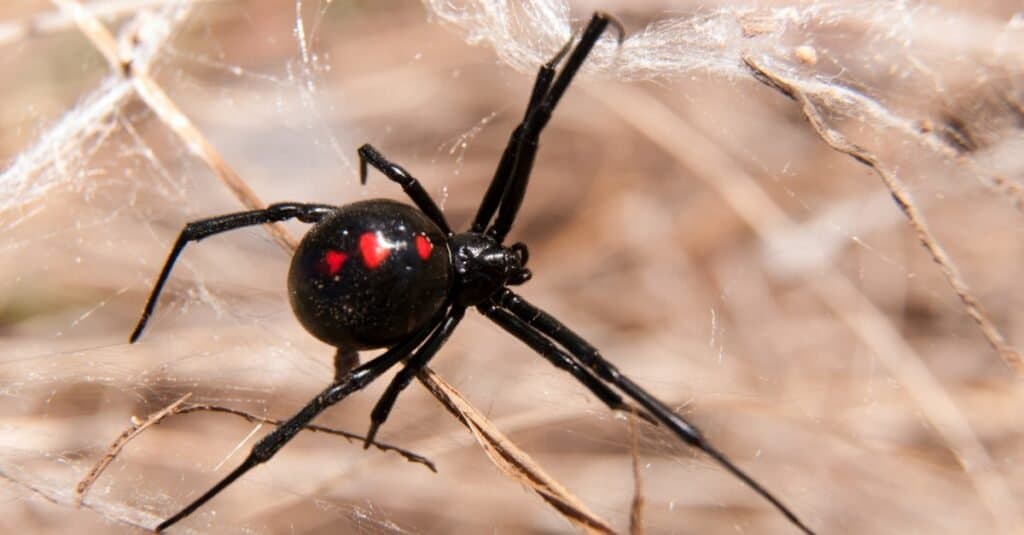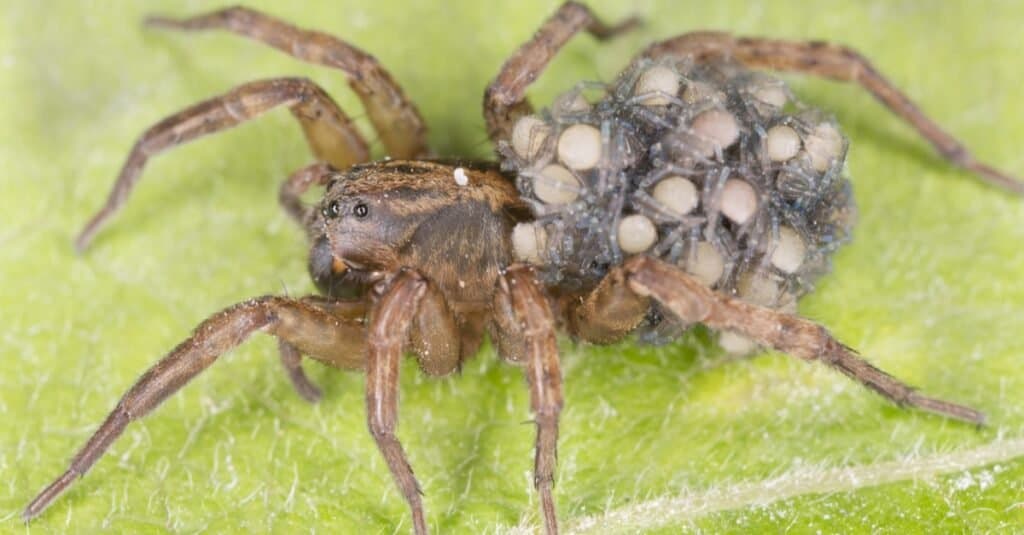
Whether you are scared of them or not, spiders live a very interesting life. How long is a spider’s lifespan, you may be asking? While it depends on the specific species, most spiders live a very similar life, especially their life cycle.
While we know that spiders are arachnids–a different animal that insects–it’s easy to assume that the life span of a spider is short like the average insect. Butterflies, for example, live an average of 15-29 days. The longest-living fly species is the horsefly, living a maximum of 60 days. But does a spider have a short lifespan, in comparison? How long do spiders live? You may be surprised to find out that they can live much longer than mere months. In fact, some can live for years!
If you’ve always wanted to learn about spiders, you’re in the right place. We’ll answer that burning question, “How long do spiders live?” by talking about the average spider lifespan, what it’s like for them from birth to death, and how spiders compare to other insects in terms of how long they can live.

Whether you are scared of them or not, spiders live a very interesting life.
©iStock.com/DianaLynne
How Long Do Spiders Live?
Spiders live anywhere from a few months to past 40 years of age, depending on the species. Common house spiders are some of the shortest life spans among spiders, with tarantulas being among the highest.
A few notable species:
- Common house spider lifespan: Generally about one year.
- Wolf Spider: Males live for a year or less while females may live several breeding seasons. In captivity, wolf spiders live 2 to 3 years.
- Brown Tarantula: Males live an average of about 10 years while females can reportedly live to 35 years of age.
Incredibly, a trapdoor spider can live past the age of 40! Scientists conducted a long-term study in Australia that studied 150 spider burrows. Incredibly, the spider from burrow number 16 lived from 1974 to 2016! Researchers estimated the spider was 43 years old and could have lived even longer, however it was killed by a tarantula hawk wasp that laid its eggs in number 16.
Tarantulas are known to live well over 10 years, which can make some unique and charming house pets. While not all of you will be excited to own a spider in your home, tarantulas can be perfect for those of you living in a small space but still interested in owning a pet.
How long do spiders live, in terms of the sexes? It is usually the case that female spiders live longer than male spiders. This could be because of genetic strength, as female spiders are responsible for laying eggs and taking care of their young. Or it could be the fact that some species of spiders either kill or consume their mate after they have finished mating.
No matter the case or the specific species, all spiders have a very similar life cycle. Let’s go over that now.

©Sari ONeal/Shutterstock.com
The Average Spider Life Cycle
From the common house spider to the tarantula, all spiders have a similar life cycle. They start as eggs, become spiderlings, and then grow into fully formed adults. Let’s go into detail about each of these steps in their life now.
Eggs
Female spiders are unique in that they can fertilize their eggs at will. Once they have mated with a male, they can reserve the sperm until they are ready to fertilize their eggs. Once they have done so, most spider eggs hatch within a few weeks.
There is an exception to this rule. If a spider decides to fertilize their eggs during inopportune weather or cold months, baby spiders will remain in their eggs until it is warmer and the weather is better. Certain species of spiders can also release their eggs from their egg sacs at will.
Young Spiders, or Spiderlings
You will recognize a spiderling because it looks just like its mother. The only exception to this description is that they will be much smaller. Spiderlings hatch from their eggs all at once and tend to run away from where they were born.
They accomplish this using their newly born legs as well as their ability to spin webs. Spiderlings will shoot webs into the air and travel on a breeze or attach to nearby plants. This charming act of escaping is known as ballooning.
Unlike ants, spiders need time to grow and form their exoskeleton. This process can take time, and female spiders usually grow bigger, which means they need even more time to reach their full size and potential.

Certain species of spiders can release their eggs from their egg sacs at will.
©Henrik Larsson/Shutterstock.com
Adult Spiders
Most spiders reach adulthood within a few months of emerging from their eggs. Some male spiders of certain species are born fully formed, but nearly all female spiders need more time to mature.
Adult spiders are usually classified as such because they are able to breed and start this very common life cycle all over again. Some species of spiders continue molting and changing as they age, the tarantula being among them.
If a female spider has mated with a male but hasn’t used the sperm from that process yet, the female spider can lose the sperm through molting. This can be an inconvenient step in the life cycle process, but thankfully there are usually always male spiders nearby!

A tarantula can make a great pet, but it’s not right for everyone.
©Milan Zygmunt/Shutterstock.com
How to Extend the Lifespan of Your Pet Tarantula, One of the Longest Living Spiders
If you currently own a pet tarantula or are interested in adopting one, there are many things you can do to extend its life and give it the best quality of life possible. Some things you can do include:
- Find the right-sized enclosure. Contrary to most other house pets, tarantulas don’t actually appreciate living in more space. Spiders hunt their prey, so having live food in a large cage can leave your tarantula having trouble finding its food. Make sure your tarantula has ample space to roam, but not too much space that it loses its food daily.
- Don’t handle your spider while it molts. Tarantulas molt frequently, but it is important to leave them alone during this process. You may feel concerned because your spider will not eat or move around much during this time. This is a completely normal part of the tarantula and spider life process, and you risk hurting your spider when it doesn’t have the protective coating of its advanced exoskeleton.
- Give your tarantula a place to hide. Tarantulas love the comfort and security of a hiding place, as most spiders often do. While uncovering a hidden spider in the wild can be frightening, giving your tarantula a place to nest and burrow is necessary for its overall health. You can use pieces of bark, dirt, and certain varieties of moss to accomplish this. Don’t be surprised when you can’t find your pet until you overturn its hiding place!
The photo featured at the top of this post is © Pixel Memoirs/Shutterstock.com
Thank you for reading! Have some feedback for us? Contact the AZ Animals editorial team.







